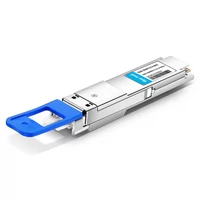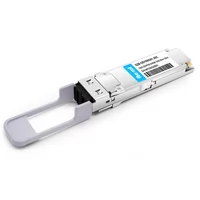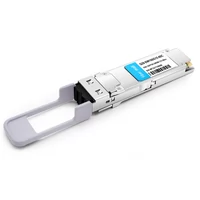The demand for optical transceivers has increased due to improvements in fast networking technology that require robust and efficient ones, especially those that work at 100G. At the top of this list are the 100G DWDM QSFP28 PAM4 optical transceivers, which offer excellent bandwidth capabilities while saving on space and power usage. This paper examines what makes them tick – technical, it looks into the technology behind them,their operational principles, and where they are applied in today’s data centers and telecommunications infrastructure, among many other things. Understanding how these things are designed and work will help people realize why they form such an essential part of meeting ever-increasing demands for digital transmission in today’s world
Table of Contents
ToggleWhat is a QSFP28 Optical Transceiver, and How Does It Work?
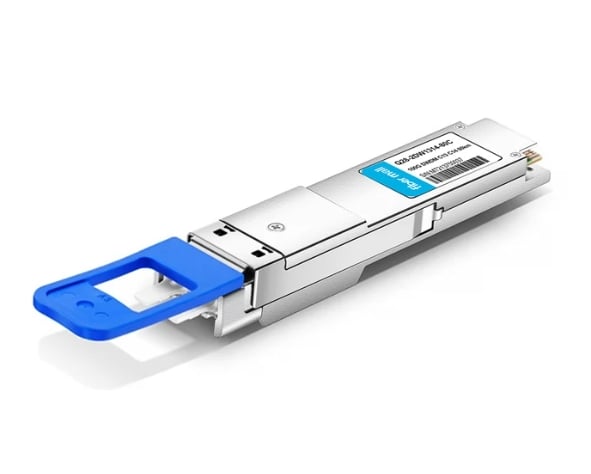
Understanding the QSFP28 Form Factor
The Q288 (Quadrilateral Small-Size Form-Factor Pluggable 28) is a small, dense transceiver design for 100G data transmission applications. For this reason, it has four lanes, with each having the capacity to transmit data at the speed of 25 Gbps, thereby giving a combined throughput of 100 Gbps. This form factor is essential in high-performance networking environments like data centers because it saves space and power. The connectors are designed to fit into standard 19-inch racks and can work with different media types such as multimode fibers and single mode fibers. They can be replaced or upgraded easily without interrupting network operations since they have the hot-swappable capability, which ensures smooth scalability within next-generation network architectures that are still under development.
Key Features of QSFP28 PAM4
The QSFP28 PAM4 transceiver is based on Pulse Amplitude Modulation (PAM4), a technology that amplifies data transmission efficiency by coding two pieces of information into one symbol instead of just one. This means that it can double the rate at which it sends data through the same bandwidth when compared with traditional NRZ (Non-Return-to-Zero) modulation. Below are some notable features:
- Fast Data Rate: Can operate at 100 Gbps; this allows for quick transfer of information necessary in high-demand areas.
- Better Signal Quality: The use of PAM4 modulation enhances signal integrity over longer distances by fighting off more types of signal deterioration.
- Smaller Size: The compact size saves space and reduces power consumption, making it best suited for energy-saving networks.
- Interoperability: It can work with other network devices without any problem as it is fully compatible with all existing network infrastructures ensuring that different components can be integrated together easily while remaining interoperable.
- Scalability: Facilities can carry out maintenance or upgrades easily since they are hot-pluggable. This makes it possible for them to expand their capacity without experiencing any downtime.
In summary, these characteristics position the QSFP28 PAM4 transceiver as an essential tool for improving data centers and telecommunications systems and meeting the growing need for bandwidth in today’s digital age.
How QSFP28 100G DWDM Modules Operate
DWDM QSFP28 100G modules allow for multiple data channels to be sent over a single optical fiber at the same time, greatly increasing network capacity. These modules use various laser light wavelengths in order to send data with DWDM technology, which means that more than one signal can be combined into a single coherent stream.
- Signal Multiplexing: A typical DWDM module operates at one wavelength and can transmit high-speed (up to 100 Gbps) data rates for each channel. With multi-carrier systems and accurate control of wavelengths through advanced modulation formats, it becomes possible to put several signals together on one fiber without any interference between them.
- Optical Components: Lasers, modulators, and receivers are among the most important components of these modules as they encode/decode information accurately enough. This leads to low-loss transmission using high-quality parts thus ensuring data integrity over longer distances.
- Transceiver Integration: The QSFP28 DWDM module is made to fit seamlessly into existing networking equipment so that networks can be designed flexibly and scaled up whenever necessary. Such compatibility enables data centers to upgrade their infrastructure quickly and economically while still meeting rising bandwidth needs.
In summary, QSFP28 100G DWDM modules are critical in terms of cost-effectively maximizing bandwidth efficiency within modern data networks.
Why Choose QSFP28 PAM4 for 100G DWDM Networks?
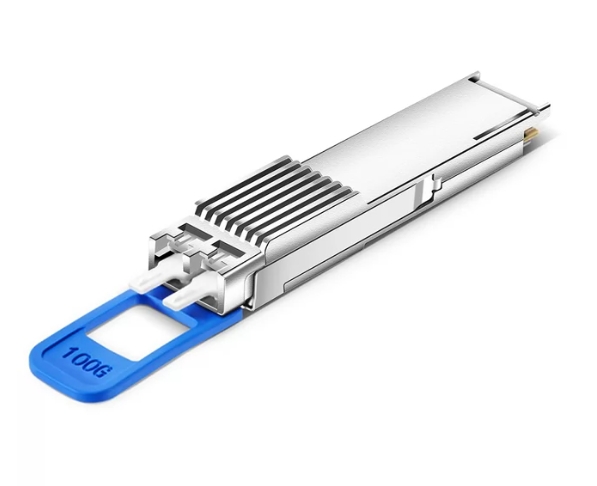
Advantages of PAM4 Modulation
For 100G DWDM networks, PAM4 (Pulse Amplitude Modulation with four levels) has several benefits that make it ideal for high-speed data transmission.
- Higher Data Rate: PAM4 achieves twice the data transmission capacity of conventional NRZ (Non-Return-to-Zero) signaling by packing two bits per symbol instead of one. This means that it can increase bandwidth utilization efficiency without requiring a proportional rise in signal bandwidth.
- Cost Efficiency: With PAM4, it is possible to achieve higher speeds on the existing infrastructure which minimizes the need for extensive fiber optic upgrades among other components of the network. This lowers capital expenditure while still retaining necessary capacity for growing data traffic.
- Extended Reach: PAM4 is designed to tolerate signal degradation over longer distances hence can give good performance even under difficult conditions where transmission would otherwise be impossible. This capability eliminates or reduces the number of signal regeneration points required resulting into cost savings as well as improved overall network management.
These merits firmly establish PAM4 modulation as a critical technology for addressing contemporary requirements imposed by data growth and delivering superior performance within 100G DWDM environments characterized by advanced functionality and operational efficiency needs.
Long-Distance Capability: 80km and Beyond
For 100G DWDM networks, PAM4 modulation technology is best for long-distance transmission. It can reach up to 80km and beyond that. The ability of this technology to handle signal deterioration is what makes it possible. Advanced error correction techniques and optimized modulation formats help achieve this level of resistance against signal degradation. To ensure that PAM4 signals remain strong throughout extended ranges, modern implementations use high quality optical components which have low loss and distortion levels. Moreover, service providers can take advantage of their existing fiber infrastructures leading to huge savings as they meet the needs of high bandwidth consumption brought about by current applications. With good system design coupled with signal integrity measures put in place, PAM4 will continue performing reliably even over distances way past the traditional limit, thus improving data network scalability.
Compatibility and Compliance with DWDM Standards
PAM4 modulation is created so as to be in complete conformity with the existing standards of Dense Wavelength Division Multiplexing (DWDM), making it easy to insert into the present network configurations. The multiplexing of multiple signals over one fiber for maximum utilization of bandwidth is made possible by this interworking. According to ITU-T G.694.1 recommendations, PAM4 signals can be transmitted through typical DWDM channels without having to make any major changes to the infrastructure being used. Additionally, PAM4 meets different optical transport network (OTN) specifications, which ensures that there is cooperation among various vendors’ equipment, thereby creating an environment that supports advanced networking solutions. It becomes necessary to stick by these rules as networks grow because failure may lead to unreliability in performance thus inhibiting further improvements on high-speed data transmission systems.
How Does QSFP28 PAM4 Enhance Data Center Interconnects?
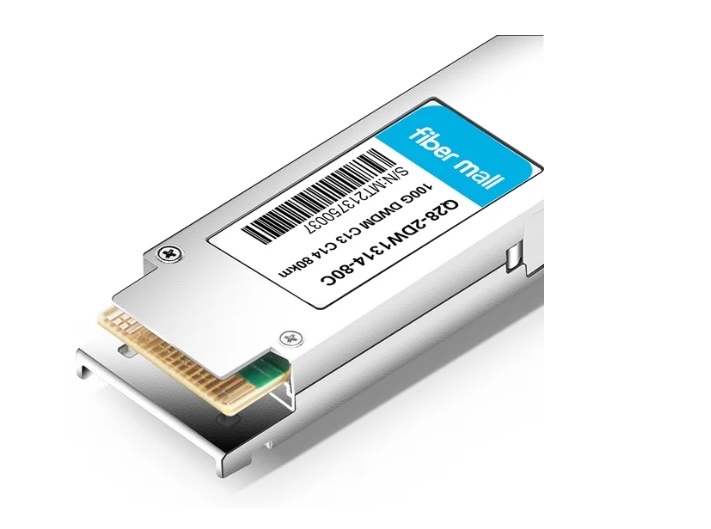
Benefits for Data Centers
The adoption of QSFP28 PAM4 technology has many advantages, especially for data centers that want to maximize performance and efficiency. First, higher data rates can be achieved with PAM4 thereby enabling data centers to use 200 Gbps speeds via normal optical cables. This increase in bandwidth is significant because it supports the need for faster interconnects between servers and storage systems, which, in turn, increases the overall processing of information.
Secondly, the efficient utilization of existing infrastructures is another key benefit brought about by this new technology. This means that there will be no need for extensive upgrades as current fiber optics can still serve their purpose; hence reducing capital expenditure. It is cost-effective which implies that one can adopt it slowly over time while also being able to adjust easily whenever expansion of bandwidth occurs without having to disrupt everything within a system.
Last but not least, Power Saving Mode (PAM) helps save power too! This happens through maximizing the amount of transmitted data per watt, thereby cutting down operation expenses besides contributing towards sustainability goals. Such an aspect becomes more important considering that such an industry should comply with strict energy-saving requirements so as to correspond with international programs advocating for “greener” technology practices.
Ensuring Reliable Data Rate and Performance
There are a few things that need to be taken into account in order for data centers using QSFP28 PAM4 technology to have an assured reliable data rate and performance. First, sticking to industry standards and specifications like IEEE 802.3bs would ensure that there is uniformity and compatibility between devices. Additionally, one can increase the robustness of information during transition by implementing advanced error correction methods; for example, forward error corrections (FECs) correct mistakes caused by signal weakening over long distances.
Furthermore, stability can only be achieved through optimized network architecture design, which ensures stable performance is attained always irrespective of anything else, hence making this point very significant indeed. Routers should be placed strategically along side switches so as not only reducing latency but also increasing throughput at the same time. Monitoring frequently done on optical link quality helps detect early potential problem areas. Lastly but not least cooling system within the data centre should never be overlooked otherwise it may result into poor functionality of optical transceivers among other hardware components. Taking these factors into consideration will enable data centers to utilize QSFP28 PAM4 technology effectively alongside reliability in the transmission of information.
Integrating with Existing Infrastructure
When integrating into the current data center infrastructure the QSFP28 PAM4 technology, there is a need to evaluate what is currently possible and what is not. It is important to assess whether the existing cables, switches, and network protocols can support or are compatible with this new technology by conducting a comprehensive examination. This means that one should use interfaces that are backward-compatible so as to make the transition easier, thus allowing for phased integration without necessarily overhauling the whole system.
What’s more, higher data rates require an adjustment in network management tools to handle increased complexity levels, while post-integration operational smoothness can be achieved by training staff on recent advancements and industry standards. Working together with suppliers can give ideas about successful strategies designed for particular settings. Taking care of these factors will enable enterprises maximize on QSFP28 PAM4 technologies’ potential hence improving general efficiency of operation even as they ensure continuity in service delivery.
What are the Key Components of QSFP28 PAM4 Transceivers?
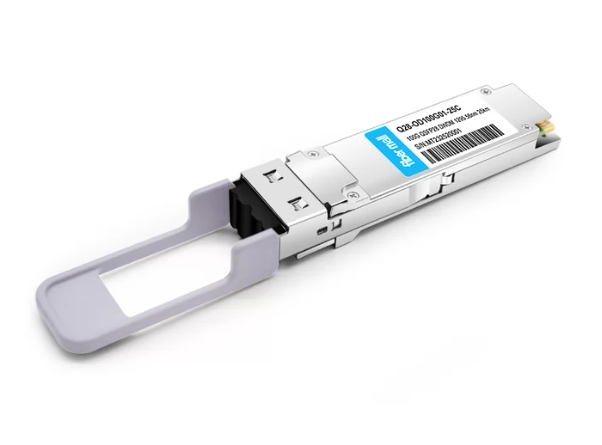
Optical Transceiver Module Breakdown
Several components are part of QSFP28 PAM4 transceivers that allow for fast data transfer as follows;
- Laser Diodes: These are the light sources used in transmitting signals; they are purposely designed to work with PAM4 modulation formats.
- Photodetectors: They convert incoming optical signals back into electrical ones making it possible for accurate interpretation of data.
- Modulation and Demodulation Circuits: This aids in managing PAM4 encoding and decoding processes thereby saving bandwidth utilization.
- Tunable Filters: Designed for minimal selectivity among different wavelengths of light so that interference may be minimized, thus enhancing signal integrity.
- Optical Interface: It links the transceiver with fiber optic cable which should be compatible with various types of fibers.
Heat Sink: Necessary for preventing overheating hence ensuring reliability through keeping optimal operational temperatures.
Single-Mode Fiber (SMF) and Duplex LC Connectors
Single-Mode Fiber (SMF) is built to carry large amounts of data over long distances by using just one light mode. This approach minimizes signal attenuation and allows the fiber to send signals farther than multimode fibers can. Typically, SMFs are used in settings where data rates must exceed 10 Gbps across extended ranges, such as telecommunications or data centers.
Duplex LC connectors are small form factor connectors that work well in high-density environments. These connectors enable bidirectional communication so that two fibers can transmit and receive at the same time, thus optimizing space within optical networks. The precise design of duplex LC connectors ensures low insertion loss and back reflection, which are necessary for signal integrity at high speeds.
Dispersion Compensation and PAM4 Modulation
Dispersion compensation is essential for fast optical communication systems that use PAM4 (Pulse Amplitude Modulation) encoding. In PAM4, every symbol stands for four different levels of optical power allowing twice as much data to be transmitted in the same bandwidth as binary modulation does traditionally. Nevertheless, this higher density of information being sent is more vulnerable to dispersion effects, which may cause signal deterioration over large distances.
There are two types of technologies used to address this problem: dispersion compensating fibers (DCF) and electronic dispersion compensation (EDC). The former implies placing specially designed optical fibers into the main transmission fiber so that they counteract signal dispersion inside it, thus keeping up its integrity, while the latter corrects receiver-end distortions induced by dispersion through digital signal processing methods. By these means together with each other, they improve the efficiency of PAM4 modulation, thereby making possible effective long-haul data transfer over optical networks at high capacity and reliability levels too.
How to Install and Maintain QSFP28 PAM4 DWDM Transceivers?
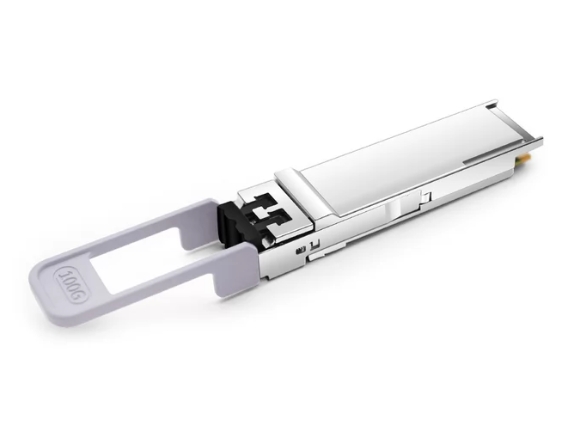
Installation Steps and Best Practices
To optimize the performance and longevity of QSFP28 PAM4 DWDM transceivers, a specific procedure must be followed during their installation.
- Before beginning the installation process, it is important to prepare adequately. Therefore, one should confirm that the chosen transceiver is compatible with their system. In addition, they should gather all necessary tools as well as personal protective equipment (PPE).
- Power down: Always turn off the power supply before installing any transceiver module into optical network devices. Failure to do so may lead to electrical faults or unintended disruptions within networks.
- Inspect modules: Visually check if there is any physical damage on the module itself or dirt/dust particles on its connectors. Dust caps are not supposed to be removed until immediately before use so that they don’t get contaminated.
- Insert transceiver: Line up pins at back part of this card with those holes provided for them within either side panel or motherboard slot while making sure you’ve also matched grooves correctly then gently push it inside until where you hear an audible ‘click’. This ensures good connection between 100G PAM4 optical transceiver and other system components for reliable link establishment.
- Secure the Transceiver: Most vendors provide additional retention mechanisms such as screws which can be used not only to hold cards in place but also prevent accidental dislodgment during operation hours especially when there are vibrations caused by nearby machines or vehicles passing near data centers where these devices are located. Hence always ensure such measures have been taken into account while carrying out these activities.
- Reconnect & Test — Power up your equipment; check everything is working correctly. Once powered up monitor link status LEDs for correct operation of 100G PAM4 optical transceivers and establish a data link
- Documentation and Maintenance — Document installations done for future reference plus keep regular checks on them for maintenance purposes. One should clean interfaces regularly since over time signal integrity degrades due to optic fiber pollution among other factors.
Following these steps will facilitate reliable installations thus enabling QSFP28 PAM4 DWDM transceivers to work efficiently in high-speed optical networks.
Regular Maintenance Tips
- Dirt-free connectors: To prevent dust and other impurities, use wipes that are free from lint with appropriate cleaning solutions on the connector ends.
- Survey cables: Examine fiber optic cables frequently for indications of wear and tear, bends, or breaks, which may affect their efficiency.
- Monitor the temperature: Ensure equipment runs within recommended temperature ranges so as to avoid overheating and damaging them.
- Do link status checkup: Test link status LEDs regularly to verify normal activity and detect problems early enough for troubleshooting purposes.
- Upgrade firmware: Keep current transceiver firmware versions in order to enhance performance capability as well as ensure compatibility with different systems.
- Plan regular inspections: Create a habit of checking network performance often thereby identifying potential problems before they become severe.
Troubleshooting Common Issues
- No connection established: Check the wires and ensure that the transceiver is properly plugged in. Examine physical damage.
- Connection cuts out sometimes: Assess whether there are any loose connections or cables that need fixing. Look out for environmental factors like temperature changes, which may affect signal consistency.
- Weak signal quality: Inspect how clean the connectors are, making sure that there’s no dust or contaminants. Measure the power with a power meter to see if it degrades significantly.
- Many mistakes happen: Bend in fiber could be causing problems within an optical path; check for this first. Make sure there are no errors in network configuration while also keeping firmware up-to-date
- Device compatibility issues: Make sure transceiver models match network equipment specifications. If necessary, refer to the manufacturer’s compatibility list.
Reference Sources
Wavelength-division multiplexing
Frequently Asked Questions (FAQs)
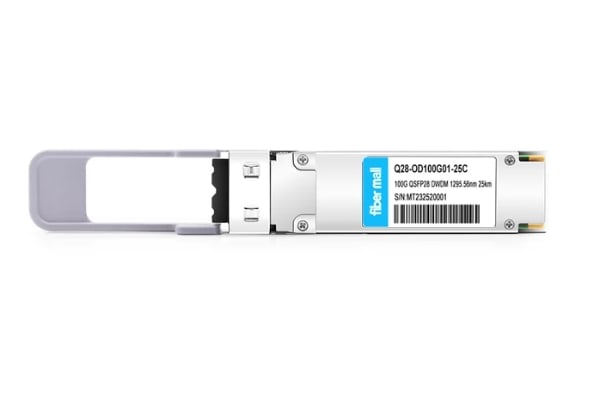
Q: What is a 100G DWDM QSFP28 PAM4 optical transceiver?
A: A 100G DWDM QSFP28 PAM4 optical transceiver is a high-speed networking device that is used in data centers and telecom networks. The component uses PAM4 modulation technology and Dense Wavelength Division Multiplexing (DWDM) to support 100G Ethernet connections over long distances while fitting into a QSFP28 form factor.
Q: How does the QSFP28 DWDM PAM4 technology work?
A: In the QSFP28 DWDM PAM4, Pulse Amplitude Modulation with four levels (PAM4) is used to transmit data. This modulation format supports higher data rates by encoding two bits of data per symbol thereby doubling the data rate compared to traditional non-return-to-zero (NRZ) encoding. It also employs DWDM which allows multiple channels to be transmitted over a single fiber using different wavelengths.
Q: What are the benefits of using 100G QSFP28 DWDM PAM4 transceivers?
A: Some advantages include faster transmission speeds, utilization of fiber infrastructure through DWDM, and compatibility with existing 100G Ethernet networks. Furthermore, the compact size of the QSFP28 form factor permits dense deployment in network environments as well as data centers.
Q: Are 100G DWDM QSFP28 PAM4 transceivers compliant with industry standards?
A: Yes, these transceivers comply with the standards of the Multi-Source Agreement (MSA) for QSFP28. This ensures interoperability between other devices and networks that are compliant with QSFP28 standards.
Q: Can 100G QSFP28 DWDM transceivers be used for long-distance transmission?
A: Yes, they can support long-distance transmission. For example, there are models such as the PAM4 80km which are designed for extended reach, using the 100GHz DWDM wavelength grid to maintain high data rates over long distances.
Q: What applications benefit from 100G DWDM QSFP28 PAM4 transceivers?
A: Applications that can benefit include DC Interconnect, Metro network deployments, and telecomms requiring high-capacity data transmission over long distances. These transceivers provide efficient DWDM connectivity in a QSFP28 form factor, making them good for environments where space is at a premium.
Q: How to ensure the compatibility of 100G QSFP28 DWDM Transceivers with my existing network?
A: To ensure compatibility, please check if your current network equipment supports QSFP28 100G PAM4 transceivers and complies with QSFP28 MSA standards. You should also verify the specific DWDM wavelengths and modulation formats supported by your network equipment.
Q: What is the typical reach of a 100G DWDM QSFP28 PAM4 optical transceiver?
A: The typical reach of a 100G DWDM QSFP28 PAM4 optical transceiver varies depending on the model and network conditions. For instance, the PAM4 80km model can travel up to 80 kilometers, hence suitable for extended metro and regional networks.
Q: How does the quality of your products ensure the reliable performance of 100G QSFP28 DWDM PAM4 Transceivers?
A: Our products are of high quality which guarantees reliable performance because we strictly test them against industry standards. Every single one undergoes thorough testing for performance, reliability as well as compliance ensuring they work optimally in demanding network environments.
Q: Why is the QSFP28 form factor ideal for 100G DWDM PAM4 Transceivers?
A: The reason why this form factor is good for these types of transceivers lies in its compact size thus allowing high-density deployment in network equipment. Additionally, it provides a standardized interface that ensures compatibility with other devices and easy integration into any existing infrastructure without much hassle.
Related Products:
-
 Q28-2DW1314-80C 100G DWDM QSFP28 PAM4 80km C13 C14 100GHz CS DDM Optical Transceiver
$1600.00
Q28-2DW1314-80C 100G DWDM QSFP28 PAM4 80km C13 C14 100GHz CS DDM Optical Transceiver
$1600.00
-
 Q28-OD100G01-25C 100G QSFP28 O-band DWDM PAM4 Single Wave C01 1295.56nm 100GHz Duplex LC 25km DDM Optical Transceiver Module
$1900.00
Q28-OD100G01-25C 100G QSFP28 O-band DWDM PAM4 Single Wave C01 1295.56nm 100GHz Duplex LC 25km DDM Optical Transceiver Module
$1900.00
-
 Q28-DW100G15-80C Compatible 100G DWDM QSFP28 PAM4 Single Wave C15 1565.50nm 100GHz LC 80km DDM Optical Transceiver Module
$1900.00
Q28-DW100G15-80C Compatible 100G DWDM QSFP28 PAM4 Single Wave C15 1565.50nm 100GHz LC 80km DDM Optical Transceiver Module
$1900.00

